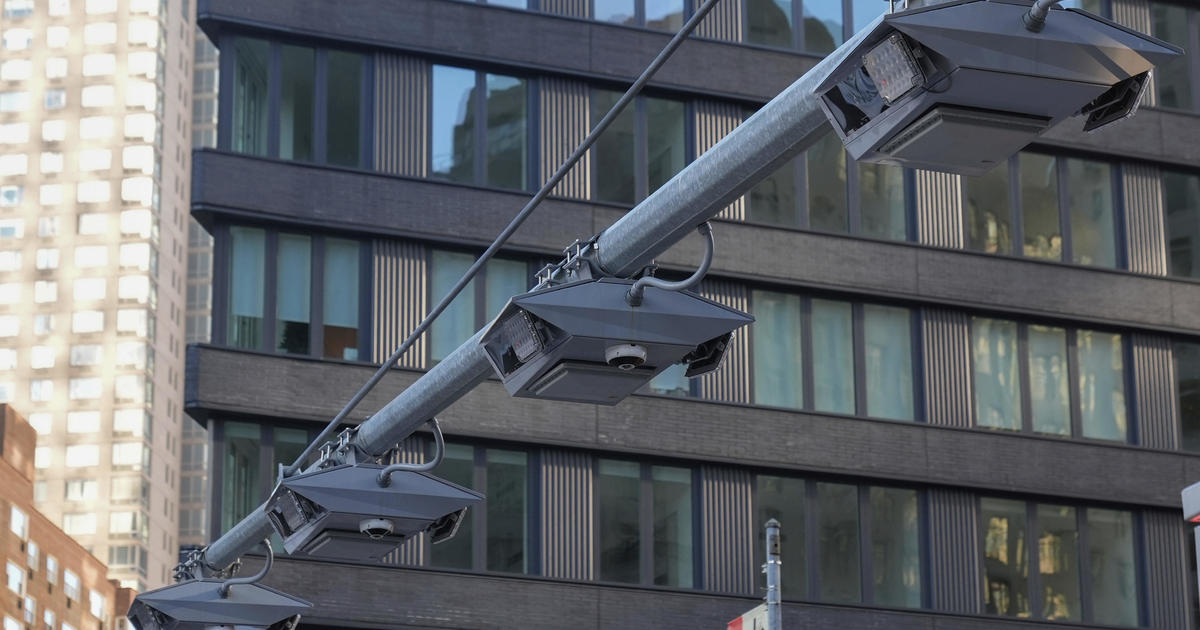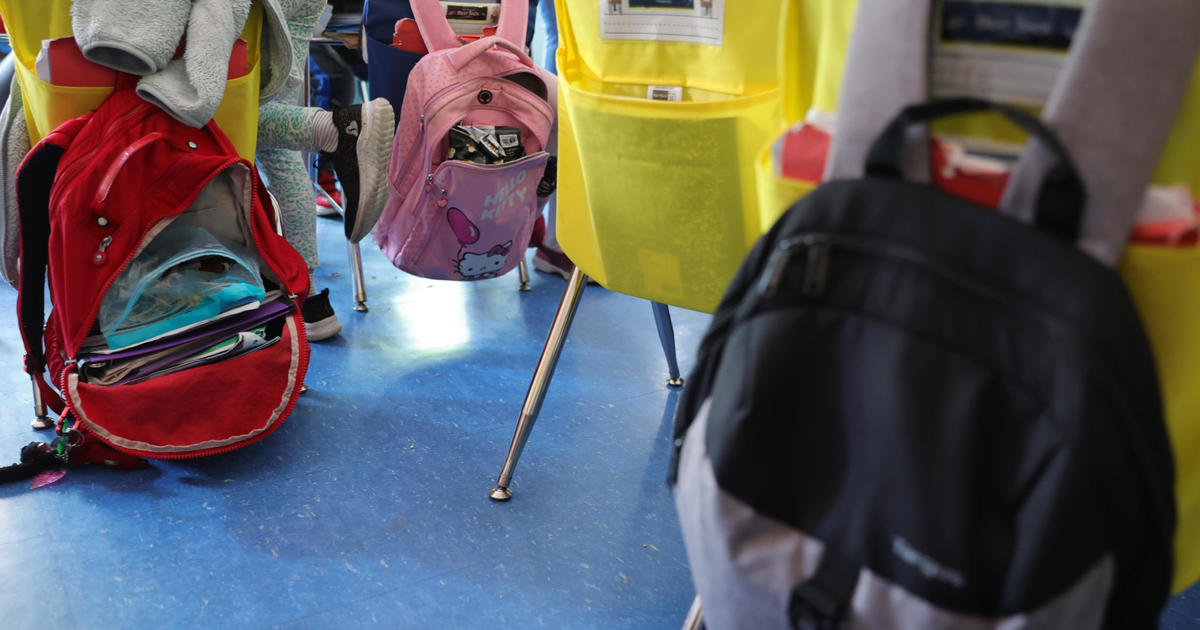5.6 Million Asked To Evacuate In Florida As Powerful Hurricane Irma Approaches
MIAMI (CBSNewYork/CBS News/AP) — Irma took direct aim at Florida on Friday and officials asked 5.6 million people statewide to evacuate, as the monstrous Category 4 hurricane spun along a long-feared path right through the heart of the peninsula.
As of 11 p.m., CBS2's Lonnie Quinn reported Irma was back to being a Category 5 -- storm with maximum sustained winds of 160 mph and pressure at 924 millibars. Irma was headed west at 13 mph and was 300 miles south-southeast of Miami.
It is expected to come ashore someplace south of Miami on Sunday.
Irma made a landfall in north central Cuba late Friday night. The storm killed at least 20 people in the Caribbean and left thousands homeless as it devastated small resort islands in its path.
MORE FROM CBS NEWS | MORE FROM CBS MIAMI
The storm is now tracking farther to the west than expected earlier, with one model showing a possible landfall in Fort Myers.
Forecasters adjusted the storm's potential track more toward the west coast of Florida, away from the Miami metropolitan area of 6 million people, meaning "a less costly, a less deadly storm," University of Miami researcher Brian McNoldy said.
But the hurricane is of such a size that both the East and West coasts of Florida will be affected.
"This is a storm that will kill you if you don't get out of the way," National Hurricane Center meteorologist Dennis Feltgen said. "Everybody's going to feel this one."
EXTRA: Staying In Irma's Path? What You Should Know
On Friday night in Miami, the downtown waterfront was nearly deserted and storefronts were locked up. It was all a little too eerie for Brooklyn-born Juan Rodriguez, who has been there for six years.
But this was the first time he had ever been able to throw the football around with his son in these streets.
"Never seen it like this -- abandoned, everybody left," Rodriguez told CBS2's Jessica Layton, adding that the desolation made him feel "a little unsafe."
With life-threatening storm surge expected, the downtown area of Miami is under strict order to leave. But Rodriguez and his kids are staying put.
They live a block away from a boarded-up business district - not far from the water.
"Traffic is awful. We're pretty much stuck," Rodriguez said. "Shelters are all full."
Throughout the day, gas shortages and gridlock plagued the evacuations, turning normally simple trips into tests of will. Parts of interstates 75 and 95 north were bumper-to-bumper, while very few cars drove on the southbound lanes.
Manny Zuniga left his home in Miami at midnight Thursday to avoid the traffic gridlock that he'd seen on television. It still took him 12 hours to get 230 miles to Orlando — a trip that normally takes four hours.
"We're getting out of this state," he said of his wife, two children, two dogs and a ferret. "Irma is going to take all of Florida."
Tony Marcellus racked his brain to figure out a way to get his 67-year-old mother and 85-year-old grandfather out of their home five blocks from the ocean in West Palm Beach. He lives 600 miles away in Atlanta. He checked flights but found nothing and rental cars were sold out, so he settled on a modern method of evacuation.
He hired an Uber to pick them up and drive them 170 miles to Orlando, where he met them to take them to Atlanta. He gave the driver a nice tip.
"I have peace of mind now," said Marcellus' mother, Celine Jean. "I've been worried sick for days."
Authorities have opened hundreds of shelters for people who did not leave. Desperate evacuees wrapped around emergency shelters in the Miami - but many were turned around away.
Floridians are already exhausted, and so are members of Central Florida Urban Search & Rescue -- which just returned from Hurricane Harvey in Texas.
"I'm tired and I wish it wasn't coming," said Scott Hammond of Central Florida Urban Search & Rescue. "I would like a little rest."
Florida Gov. Rick Scott said people fleeing could drive slowly in the shoulder lane on highways. He hasn't reversed the southbound lanes because he said they were needed to deliver gas and supplies.
Several small communities around Lake Okeechobee in the south-central part of Florida were added to the evacuation list because the lake may overflow — but Scott added that engineers expect the protective dike to hold up.
Miami-Dade County Mayor Carlos Gimenez said he planned for enough space to hold 100,000 people before the storm arrives, although most shelters were only beginning to fill on Friday.
"You don't have to go a long way. You can go to a shelter in your county," Scott said.
"This is a catastrophic storm that this state has never seen before," the governor added.
While the latest forecast shifted the most powerful part of the storm to the west of the Miami metropolitan area that is home to some 6 million people, hurricane-force winds are still likely there.
"Irma is likely to make landfall in Florida as a dangerous major hurricane, and will bring life-threatening wind impacts to much of the state regardless of the exact track of the center," the hurricane center said in its forecast.
The hurricane has already been blamed for one death.
Police in the Fort Lauderdale suburb of Davie said a 57-year-old man who had been hired to install hurricane shutters Thursday morning died after falling about 15 feet from a ladder and hitting his head on a pool deck. The man's name wasn't immediately released.
Disney World parks will close early Saturday and remain shuttered through Monday, as will Universal Orlando and Sea World.
Numerous other Florida tourist destinations are also closed. In Sarasota, the Ringling Museum campus – which houses a renowned art museum, a two-building circus museum and the historic Ca' d'Zan mansion – is closed until further notice in preparation for Irma, according to the museum website.
The last major hurricane — a storm with winds of at least 111 mph — to hit Florida was Wilma in 2005. Its eye cut through the state's southern third with winds of 120 mph. Five people died.
Hurricane Andrew slammed into Florida as a Category 5 storm in 1992 and at the time was the costliest hurricane in U.S. history with damages of $26.5 billion.
Andrew revealed how lax building codes had become in the country's most storm-prone state, and Florida began requiring sturdier construction. Now, experts say a monstrously strong Irma could become the most serious test of Florida's storm-worthiness since then.
Andrew razed Miami's suburbs with winds topping 165 mph, damaging or blowing apart over 125,000 homes. Almost all mobile homes in its path were obliterated. The damage totaled $26 billion in Florida's most-populous areas. At least 40 people were killed in Florida.
CoreLogic, a consultant to insurers, estimated that nearly 8.5 million Florida homes or commercial properties were at extreme, very high or high risk of wind damage from Irma.
For Irma, forecasters predicted a storm surge of 6 to 12 feet above ground level along Florida's southwest coast and in the Keys. As much as a foot of rain could fall across the state, with isolated spots receiving 20 inches.
PHOTOS: Hurricane Irma Devastates Caribbean
All gas stations in the Keys are now closed, and the race is on to keep fuel flowing to south and central parts of the state.
Miami resident Jay Gomez was going to go, but "I thought I might be more useful here and just help out as many people as I can," he told CBS News' Kenneth Craig.
Joe Logan is also staying but not taking any chances with his boat.
"During Andrew, when the surge came in, the boats went so high, they later came down and impaled themselves on the pilings," he said.
Authorities are reminding people who choose to stay behind that they will be on their own once the storm hits and possibly without resources for days, even weeks.
With winds that peaked at 185 mph, Irma was once the most powerful hurricane ever recorded in the open Atlantic.
Irma's weakening comes at a cost. When that happened, its hurricane-force wind field expanded greatly, to about 110 miles wide, said Jeff Masters, meteorology director at the private service Weather Underground.
"It's a big storm," Masters said. "It's not as big as Katrina, but it is definitely a large hurricane now."
Even as forecasts showed the storm's center could enter Georgia far inland after churning up the Florida peninsula, Gov. Nathan Deal urged nearly 540,000 coastal residents to evacuate, noting Irma's path remains unpredictable. Forecasts show it could enter the state Monday anywhere from the Atlantic coast to the Alabama state line.
People at Miami and Fort Lauderdale's airports have only hours to catch the last flights out. With three kids, their nanny and a whole lot of luggage in tow, the Yolofskys from Miami were relieved to have made it to New York.
"You just don't mess around with a Cat 4," AJ Yolofsky told CBS2's Janelle Burrell.
The family landed at LaGuardia Airport on Friday morning after driving overnight Thursday from Miami to Orlando, a strategy in the works since Monday, to get their family out of the path of Irma. They plan to stay with family in New Jersey.
The Benedise family from Miami got out in the nick of time, too. Like many, Jimmy Benedise tried to get a flight out of Miami International.
"We've been canceled twice, so we finally found a flight from Tampa," he told WCBS 880's Marla Diamond. "We drove all the way to Tampa from Miami yesterday night, and here we are."
Relieved to be out of Irma's path, but worried about what they might come home to.
"We've been thorough many storms in Miami. This one, I don't know," he said. "This is very, very strong and frightening."
With few, if any, available flights left to leave, many are feeling desperate. Madison Fischer, who lives in Vero Beach but is originally from Staten Island, booked one of the final seats on her flights.
"My parents are still there cause we have dogs and a cat, and they're going to hunker down and try and do what they can," she said. "My mom did the whole 'if I die,' and I'm like, 'oh my God, stop! Calm down.'"
Another woman named Gail came from central Florida said she feels pretty lucky because she happened to book her flight months ago to attend a wedding in New York this weekend.
"Me, it was just dumb luck that I got to be away and not have to make a last-minute plane reservation," she told 1010 WINS' Carol D'Auria. "Most of these people are desperately trying to find a way out."
As airports around Florida continue to shut down ahead of Irma's arrival, many in New York say they feel lucky to have made it out.
"I'm happy to be up here, but I'm worried," said Fischer.
And back in Florida, there's no rest for anyone who is still preparing their homes to withstand the storm.
In Miramar, where getting out is not mandatory, most in this neighborhood are putting up steel shutters and riding out Irma inside.
"It's concrete," said Michelle Herbert of Miramar. "I'm certain we'll withstand it."
Herbert's only hesitation is seeing what this same storm did in her homeland of Anguilla days ago. Worried friends and family members have been sending the photos begging her to leave Florida.
But she said she tells them, "I'm saying I'm safe."
(© Copyright 2017 CBS Broadcasting Inc. All Rights Reserved. The Associated Press contributed to this report.)



